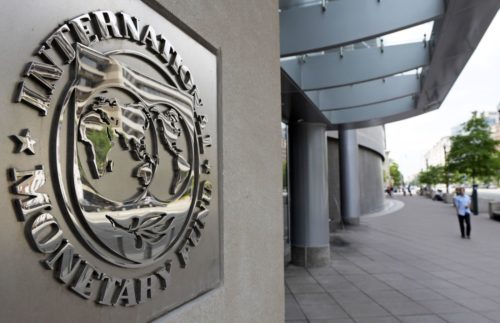The International Monetary Fund (IMF) has projected that Nigeria’s capital spending will improve this year while anticipating that financing the country’s deficit will remain a challenge with its huge debt servicing burden.
The IMF, in its updated ‘Fiscal Monitor’ report titled ‘Government Support is Vital as Countries Race to Vaccinate,’ released on Thursday, projected overall fiscal balance to be 5.9 per cent and 4.7 per cent for 2020 and 2021 respectively.
The report noted that this was an improvement compared with the 0.8 per cent and 0.2 per cent it had projected for the country in its October 2020 report.
Having classified Nigeria as a low-income developing country, the IMF said capital spending in 2021 was expected to recover partially in most countries such as Guinea, Haiti, Malawi, Nigeria and Tajikistan, after the temporary cut in 2020.
The average overall fiscal balance was estimated to be lower in 2020 by 1.7 percentage points of GDP, and the average public debt increased by 5.2 percentage points to 48.5 per cent of GDP at end-2020.
It said: “The average overall fiscal balance is estimated to be lower in 2020 by 1.7 percentage points of GDP and the average public debt increased by 5.2 percentage points to 48.5 per cent of GDP at end-2020.
“Even after accounting for higher external grants and exceptional emergency and concessional financing in many countries (including from the IMF), average revenues fell sharply.
“Expenditures continued to rise in real terms, notably in health spending and social assistance to vulnerable households. Many governments reprioritised spending for example, by cutting capital expenditures.”
The IMF stated that in 2021, the average fiscal deficit was projected to decline to five per cent of GDP from 5.7 per cent in 2020.
As economies recover, the multilateral institution expects revenue collection to improve, whereas pandemic-related spending is projected to decline.
“Capital spending in 2021 is expected to recover partially in most countries after the temporary cuts in 2020 (Guinea, Haiti, Malawi, Nigeria, Tajikistan). However, deficits are expected to widen in a few countries as revenue-to-GDP ratios only partially recover while spending and debt service costs are rising (Chad, Kenya, Myanmar).
“Although prospects for market financing are improving in some frontier market economies, near-term debt vulnerabilities remain high in many countries. Financing large deficits remains challenging, given limited market access and restricted ability to increase revenues in the near term.
“Average debt levels are projected to peak in 2021, with debt service relative to tax revenues exceeding 20 per cent in Ghana, Kenya, Myanmar, Nigeria, and Zambia and an upward debt trajectory in some, especially oil-exporting countries, such as Nigeria,” it added.
It said actions were taken to provide grants, concessional loans and debt relief to address the steep rise in public debt of low-income developing countries in 2020, including the 38 countries (out of 70) assessed to be “at high risk” of or in debt distress, according to the IMF–World Bank Debt Sustainability Assessments.
Fiscal adjustments in several countries (Ethiopia, Vietnam) and debt restructuring (Chad, Republic of Congo) were expected to contribute to debt reduction, it added.
Copyright Ships & Ports Ltd. Permission to use quotations from this article is granted subject to appropriate credit given to www.shipsandports.com.ng as the source.

